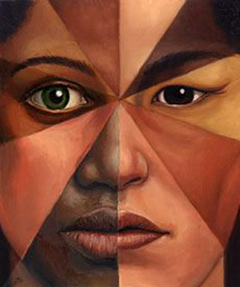2] In this lesson I say that it should be clear that the discourse on nationalism is also about ethnicity and ideologies of “race.” If you trace the historical overview of nationalism in Canada in the CanLit guide, you will find many examples of state legislation and policies that excluded and discriminated against certain peoples based on ideas about racial inferiority and capacities to assimilate. – and in turn, state legislation and policies that worked to try to rectify early policies of exclusion and racial discrimination. As the guide points out, the nation is an imagined community, whereas the state is a “governed group of people.” For this blog assignment, I would like you to research and summarize one of the state or governing activities, such as The Royal Proclamation 1763, the Indian Act 1876, Immigration Act 1910, or the Multiculturalism Act 1989 – you choose the legislation or policy or commission you find most interesting. Write a blog about your findings and in your conclusion comment on whether or not your findings support Coleman’s argument about the project of white civility.
The first human inhabitants of what we now know as North America arrived roughly thirteen thousand years ago. They came across the land bridge that once existed where the current Bering Sea is located. Over the course of thousands of years they made their way across the Americas including modern day Canada. It was not until the 1600s that other ‘races’ made their way to Canada. Almost immediately these newcomers from Europe made claim to the land and began to take advantage of not only the land but the people who had inhabited it for thousands of years. Move forward a couple of hundred years and we see immigrants from Asia beginning to arrive. Soon after their influx the Europeans put restrictions on them as a way to control culture, express their dominance as a race, and to tax them. Those first inhabitants had their culture trampled upon and their way of life completely uprooted. This was very much a period of white dominance and equality for all would not come until…well, that depends on who you ask.
For the purpose of this assignment I am going to focus on the 1988 Multiculturalism Act. I will argue that this is the closest we as a nation have come to achieving equality although there have been small steps forward in terms of recognizing the rights of First Nations peoples since that 1989 introduction.

So, let us begin. Is everyone in Canada today equal? Are there any people of people who receive special treatment (good or bad)? The answer to this question is of course yes, but perhaps equality does not have to mean people are all treated exactly he same way. Those who are treated differently by the government are First Nations peoples. ‘They’ have special rights that newcomers (those who have arrived since 1608) have not, currently. ‘They’ too have had their rights trampled upon since that second wave of immigration arrived from Europe. The question of compensation has been as will continue to be a difficult one to work with as we strive for equality. How to integrate First Nations rights into the remnants of this white society is a challenge. Coleman seems to believe that non-aboriginal Canadians need to remember the atrocities that white Europeans conducted and the damage such acts had on First Nations populations. I could not agree more but find that he has more to say than he has solutions. Up until recently the status quo has been to allow this kind of Euro-culture to continue and to deal with aboriginal issues on a kind of first come first serve system. The government hoping, and perhaps praying, that any issues can quietly be dealt with without disruption to the current state of affairs. Very recently we have seen a more proactive approach when dealing with First Nations affairs although of course there is still a lot of work to be done.
The fact that Canadians still refer to First Nations as such and that we use the word ‘they’ means we do not live in an equal society. But I don’t think that the purpose of the 1988 Multiculturalism Act was to make everyone equal. Rather, the purpose was to create fairness within the patchwork culture Canada is made up of. Coleman states that white civility still defines Canadian culture. Perhaps, but how does he suggest that we deal with that? And what would his alternative be?
Important to not is that until 1988, many other non-white ans non-aboriginal peoples felt unrepresented by their own government. One example of this could be that fact that until then, Japanese Canadians were still considered to have done wrong and no official apology was offered in relation to their internment during the second world war.
References:
Bonatto, S. L.; Salzano, F. M. (1997). “A single and early migration for the peopling of the Americas supported by mitochondrial DNA sequence data”. Proceedings of the National Academy of Sciences (National Academy of Sciences) 94 (5): 1866–1871.
CanLit.Guides. “Reading and Writing in Canada, A Classroom Guide to Nationalism.” Canadian Literature. Web. April 4th 2013.
Coleman, Daniel, (Canadian Publishers Collection), and Scholars Portal (Canadian Publishers Collection). White Civility: The Literary Project of English Canada. Buffalo;Toronto;: University of Toronto Press, 2006. Web.

